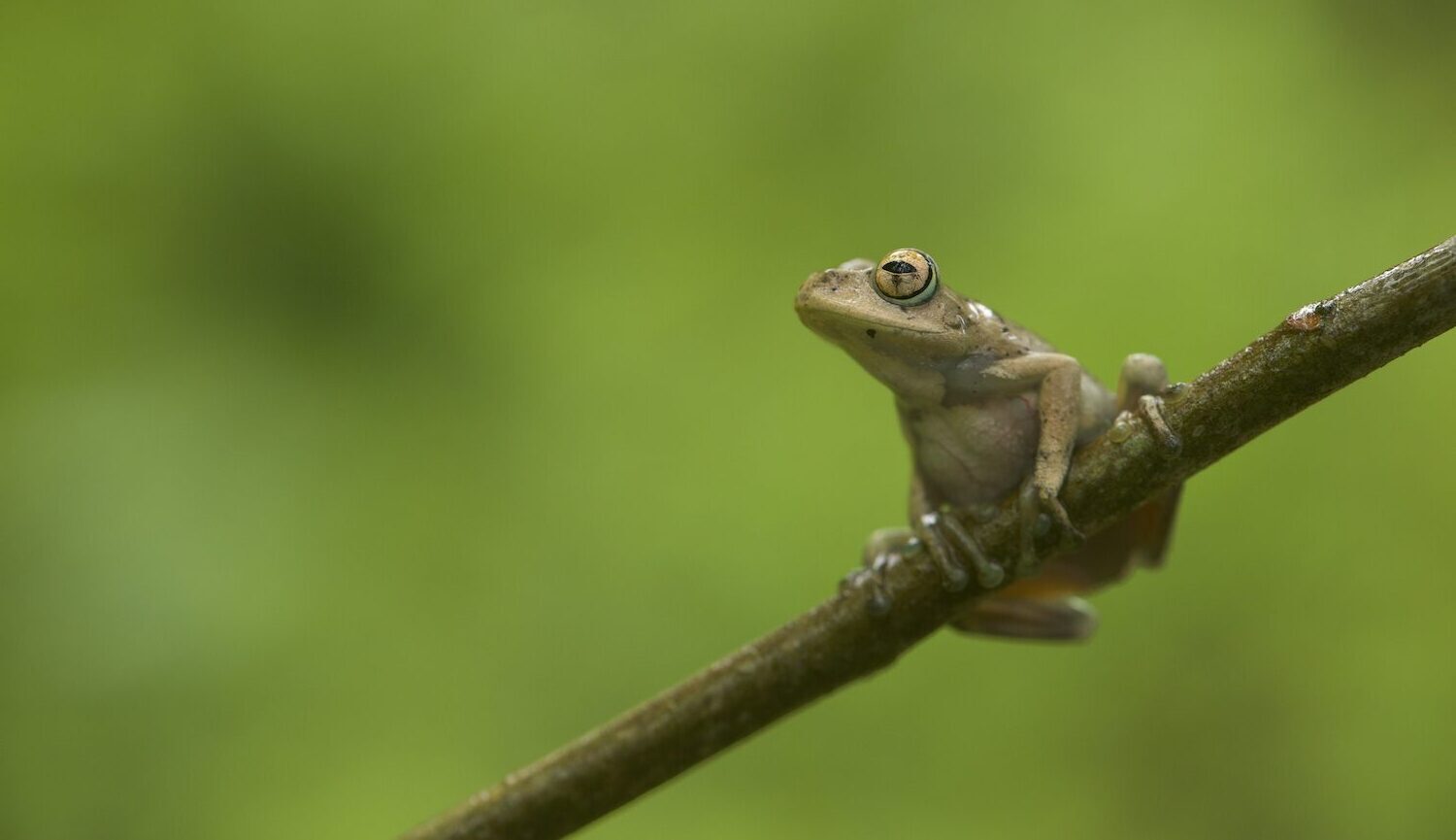A far-reaching global survey conducted by the IUCN, spanning 8,000 amphibian species, has unveiled a stark reality — 40%, totaling 2,873 species, face varying levels of extinction risk.
Brazil emerges as a biodiversity hotspot for amphibians, boasting around 1,200 species. However, the survey delivers a staggering revelation — 189 of these species are now classified as threatened, with many exclusive to the region.
While deforestation and lethal fungi have been recognized as contributors to this decline, the study spotlights the profound impact of the climate crisis.
Rising temperatures and diminished humidity, stemming from climate change, pose a significant threat to amphibians’ respiration, a process critical to their survival through skin function.
Beyond their intrinsic value, amphibians serve as vital indicators of ecosystem health, alongside their pivotal roles in pest control and medicine.
A poignant illustration of this crisis is the Tepequém frog (Anomaloglossus tepequem), once abundant in the streams of the Serra do Tepequém in Roraima, Brazil. Endemic to Brazil and this specific locality, this species is now believed to have vanished from the wild, the last sighting dating back to the 1990s.
The latest global study by the International Union for the Conservation of Nature Species (IUCN) reveals alarming statistics, classifying 26 frogs in Brazil as possibly extinct. A chilling reality unfolds as two out of every five amphibian species currently face imminent threats.
This extensive study engaged over a thousand experts worldwide, analyzing 8,000 amphibian species, encompassing toads, frogs, salamanders, blind snakes, and more — a substantial expansion from the last analysis conducted in 2004.
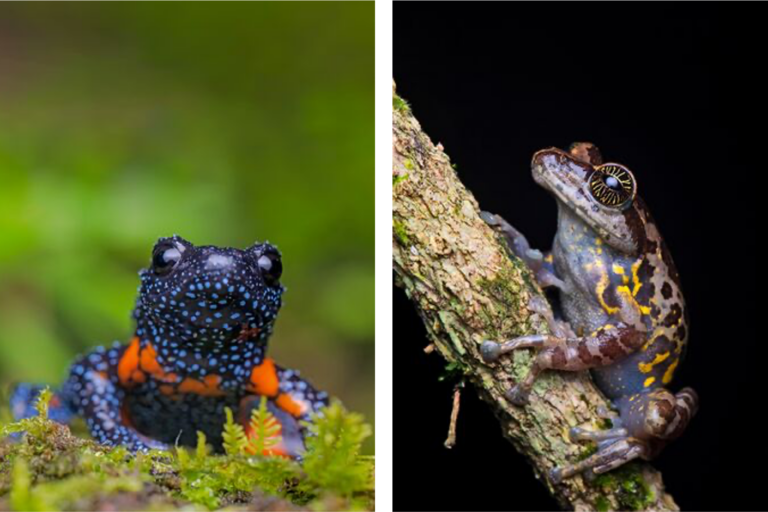
The spotlight now shifts to the profound impact of climate change on the global decline of amphibians, considered the most vulnerable among vertebrate animals. An alarming 40% of amphibian species currently grapple with varying levels of extinction risk.
While past documentation extensively covered threats like deforestation, habitat loss, and diseases such as chytridiomycosis, biologists underscore that the consequences of climate change—marked by rising temperatures, low humidity, and drought—are exacerbating challenges for numerous amphibian species.
The study unveils a disconcerting trend from 2004 to 2022, indicating that over 300 species are precariously close to extinction, with 30% of these cases primarily linked to the climate crisis.
“Water is essential for the reproduction of amphibians. It’s where they reproduce and tadpoles are born,” explains biologist Iberê Farina Machado, coordinator of the IUCN Species Survival Commission’s Assessment of Amphibians in Brazil and a co-author of the study.
Moreover, changes in temperature and humidity adversely affect their health, jeopardizing their survival. “Amphibians have moist skin and they breathe through it. Some species use a certain percentage of their lungs and another percentage of their skin for gas exchange, or vice versa. If the climate is too dry, this affects their breathing,” Machado adds.
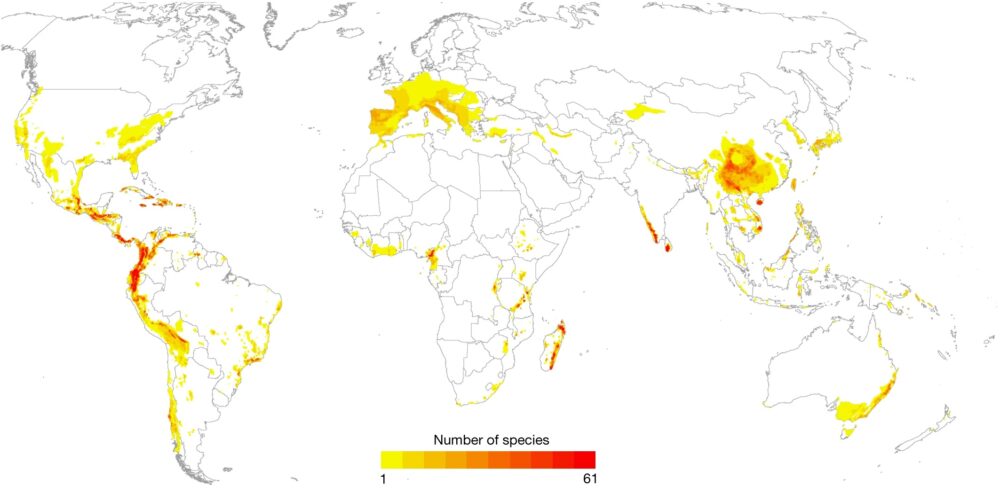
In Brazil, 26 species are on the brink of potential extinction.
Brazil, the global epicenter of amphibian diversity with around 1,200 species, faces a stark reality as a new report assesses nearly a third of these species for the first time.
The findings are alarming, with 189 species now categorized as critically endangered, endangered, or vulnerable to extinction in Brazil. Of significant concern is that a substantial majority of these at-risk species are endemic, underscoring the pressing need for focused conservation efforts.
The situation becomes even more dire when considering the 26 species classified as possibly extinct, not sighted in natural environments since the 1980s or earlier, including the little warty frog (Holoaden bradei) and the Petropolis stone frog (Thoropa petropolitana). Although both were discovered in the Atlantic Forest during the last century, the Petropolis stone frog hasn’t been observed in the streams of the Rio de Janeiro hills since 1982.

In Brazil, the primary drivers of amphibian extinction persist as deforestation, agricultural expansion, and urban development. However, the influence of climate change is becoming more pronounced.
Over the past four decades, the Amazon has experienced a temperature increase of 1º Celsius (33.8º Fahrenheit) and a significant decrease in rainfall, up to 36% in some regions. Severe droughts have become more frequent, with the Amazon states currently facing one of the most severe droughts in history. Rivers have dried up, disrupting navigation and leaving riverside communities without access to food and drinking water. Lake Tefé reported the distressing discovery of over a hundred dead dolphins during this critical period.
“As humans cause changes in climate and habitats, amphibians are unable to move very far to escape the increased frequency and intensity of extreme heat, forest fires, drought, and hurricanes brought on by climate change,” says Jennifer Luedtke Swandby, coordinator of the Red List Authority of the IUCN Amphibian Specialist Group and one of those involved in the study.
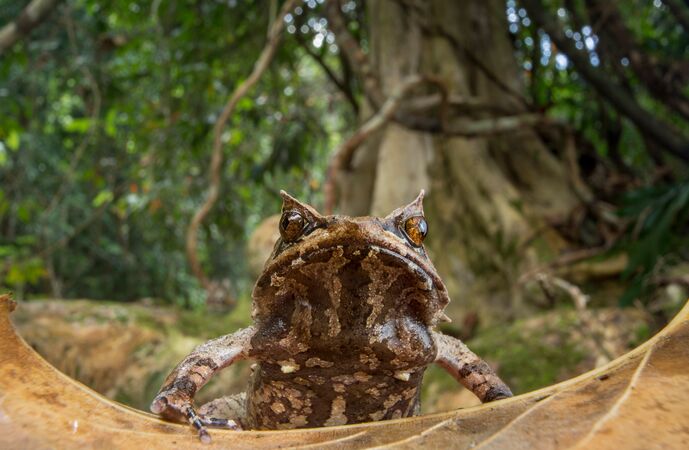
“Fragile Heights: Consequences for High-Altitude Amphibians”
Amidst the arid notes of drought, where one would anticipate a struggle for survival closest to the ground, a surprising melody emerges. At altitudes exceeding 1,600 meters (5,250 feet) above sea level, amphibians face a more rapid decline, challenging conventional expectations.
In regions adorned with expansive mountain ranges like Itatiaia National Park in Rio de Janeiro or the majestic Mount Roraima in northern Brazil, toads, frogs, and tree frogs find themselves disproportionately affected by climatic disturbances.
“We’ve observed the ascent of cloud lines, diminishing available moisture at mountain peaks. Unable to seek refuge higher up, they unwittingly become captives of the evolving climate,” shares the insight of a Brazilian biologist.
On the left, behold the Ghatophryne ornata, a frog species native to the Western Ghats mountain range in southern India, portrayed in an image courtesy of Sandeep Das/IUCN. On the right, discover the crystal frog (Hyalinobatrachium aureoguttatum), a resident of the enchanting forests spanning Ecuador, Colombia, and Panama.
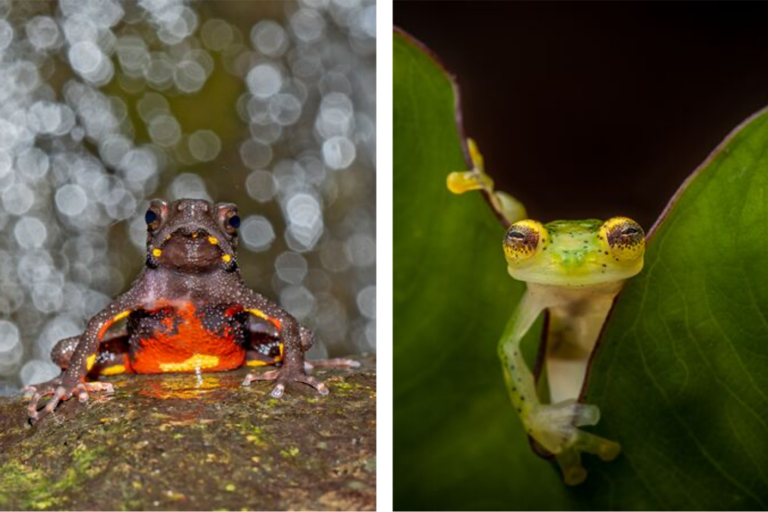
The extensive loss of numerous species and the looming threat of imminent extinction serve as poignant reminders of the pressing need to address the root causes of climate change and alleviate its repercussions. Amphibians, acting as vital bioindicators, offer insights into the overall health of ecosystems and, by extension, the planet.
“The warming world is losing many more species than human beings, and they serve as a warning to us,” emphasizes Machado.
“Amphibians are disappearing faster than we can study them, but the list of reasons to protect them is long, including their role in medicine, pest control, alerting us to environmental conditions, and making the planet more beautiful,” adds Kelsey Neam, species priorities and metrics coordinator at Re:wild, and one of the study’s lead authors.
